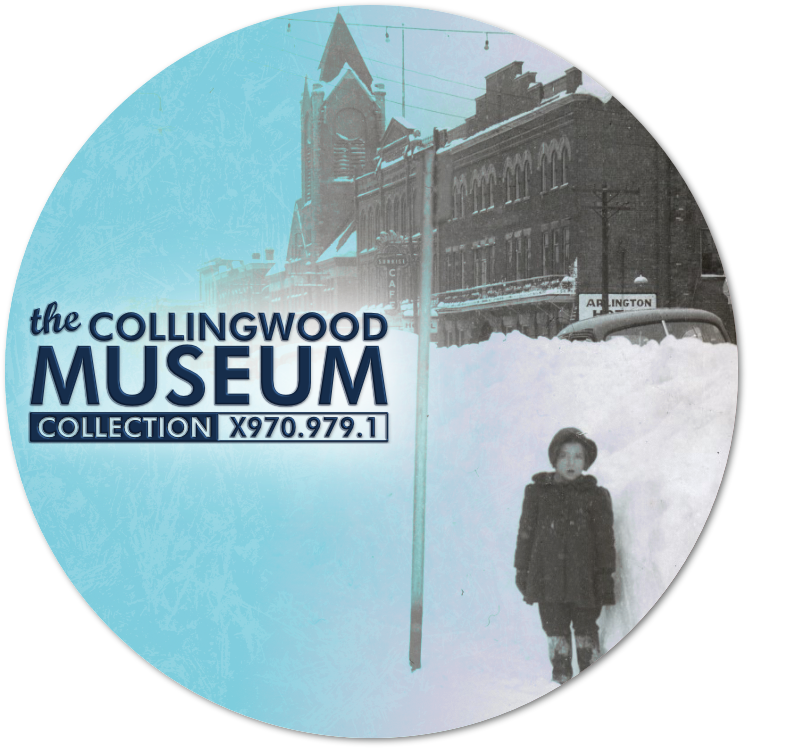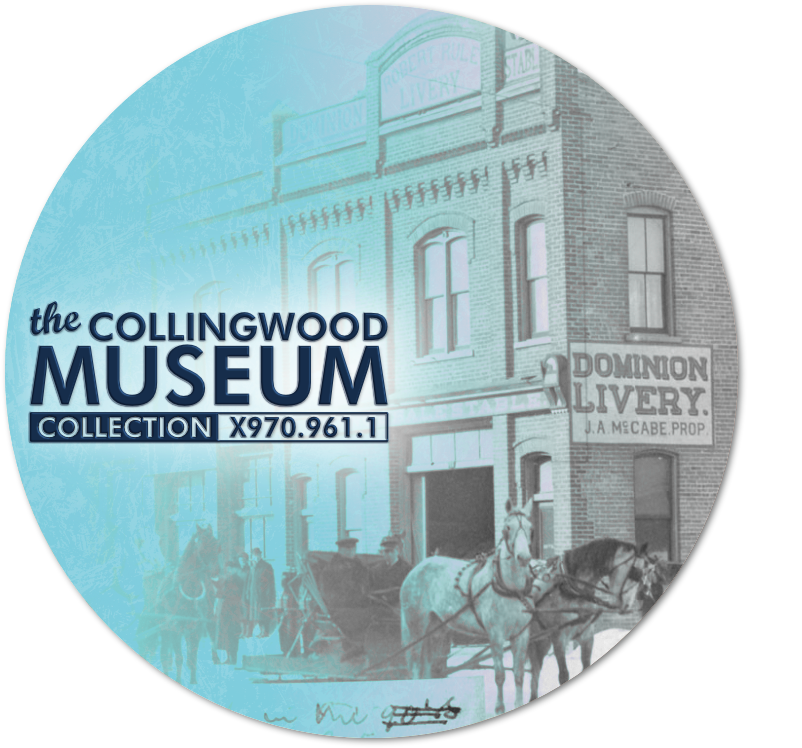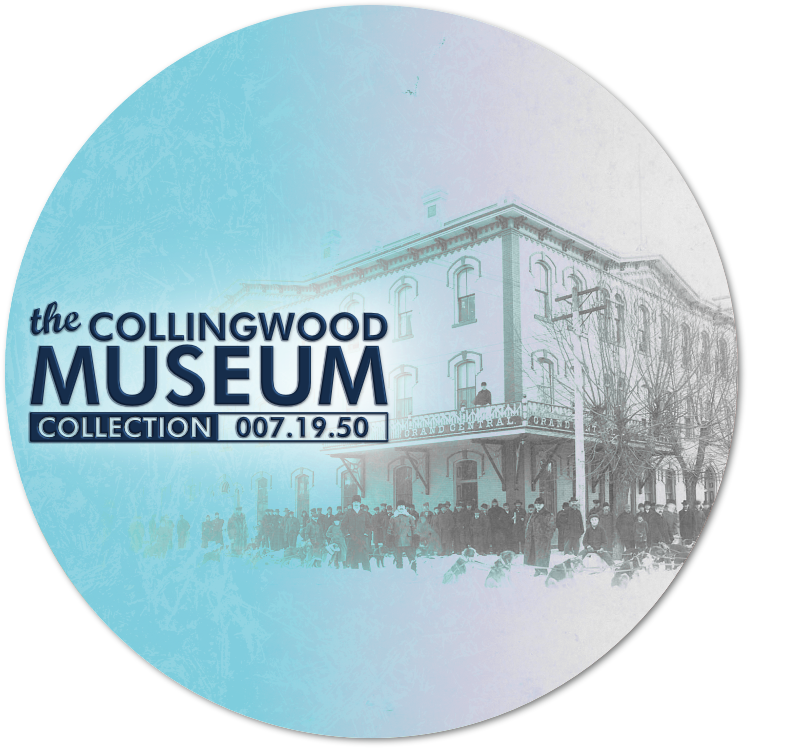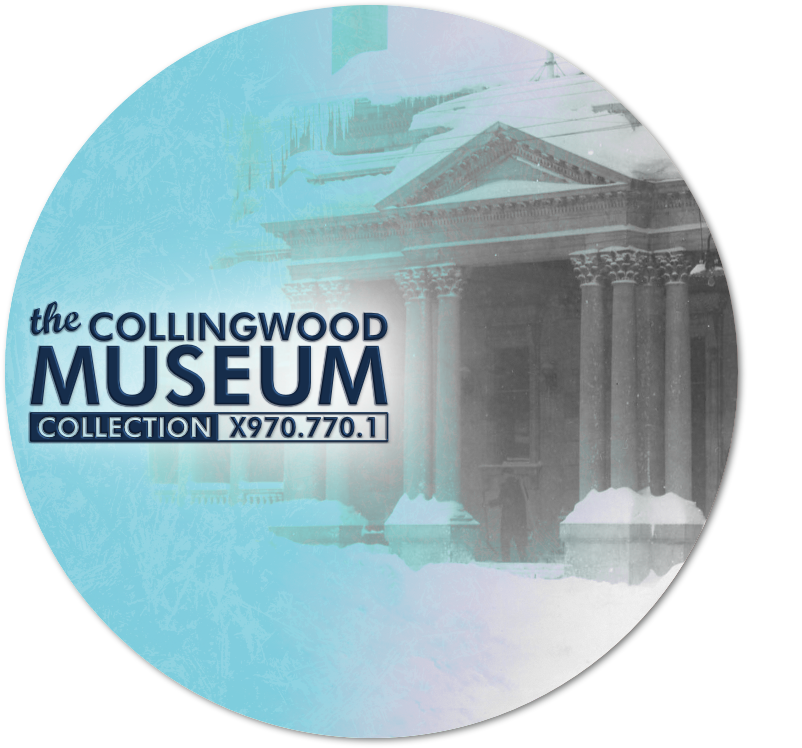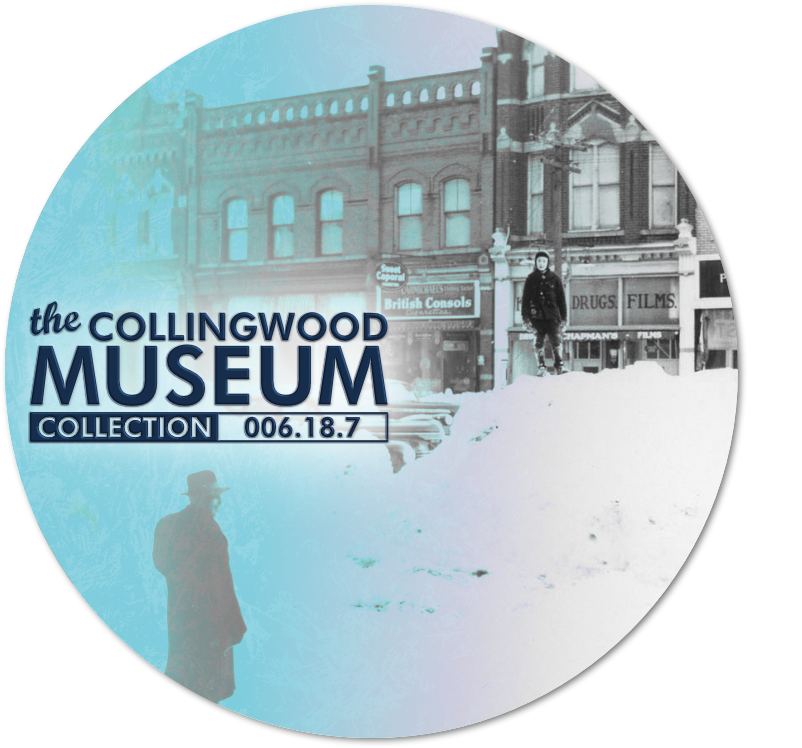Have you noticed the five historic photographs posted along Hurontario Street? These photographs from the Collingwood Museum's Collection provide an interesting window into the winters of Collingwood's past. Each has been posted near to the original location of where it was taken many years ago, allowing us to compare the historic street view with the present day. How much has changed? What has stayed the same?
What's Missing?
The large clock tower at Collingwood’s Town Hall, 97 Hurontario Street, is a recognizable sight in many historic photographs. There is one very noticeable difference between these early photographs and today’s structure—the tower was without a clock until 1951.
What's still Standing?
Over half of the buildings from this photograph from the late 1890s still stand today. Horse-drawn sleighs line the street outside of the Dominion Stable which today houses the National Bank at 108 Hurontario Street. This busy building also housed W.H. White’s Carriage Works and F. Smith Harness Saddlery Hardware.
What Portion Remains?
This three-storey building was originally opened in 1876 as the Central Hotel by Thomas Collins. By 1895 its name had changed to the Grand Central Hotel. Living up to its name, the hotel was a popular place for residents and visitors alike offering “courteous treatment and excellent entertainment.”
Where's the Shovel?
A man holding a shovel is visible between the two columns at the centre of Collingwood’s Federal Building, 44 Hurontario Street. This building was once Collingwood’s post office and customs house. Today, it houses federal government offices as a Service Canada site.
What's the Height of the Snowbank?
While we don’t know the exact height of the snowbank in this 1940s-era photograph, the boy standing on top of the snowbank towers above the cars behind him on Hurontario Street.
About The Collingwood Museum
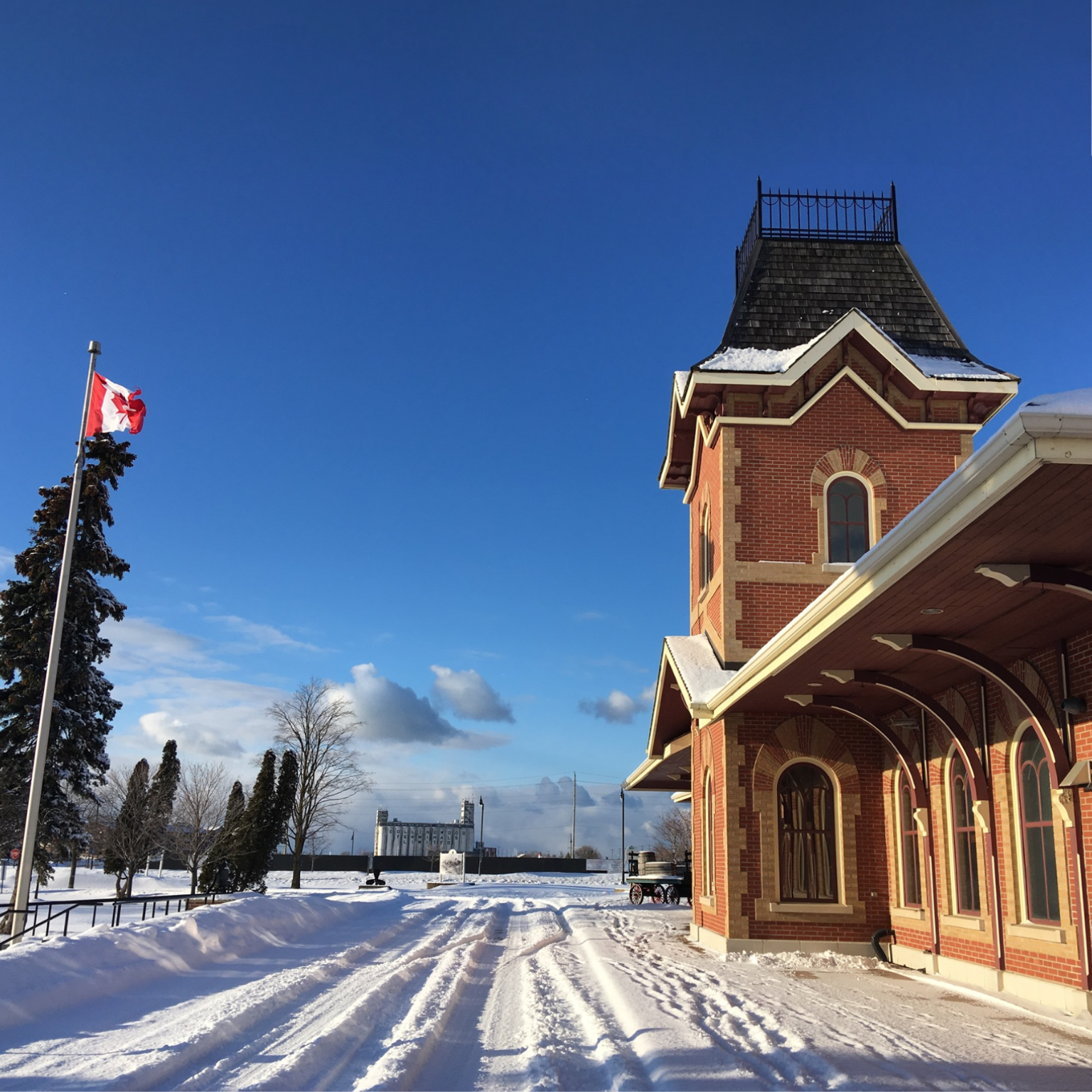
Step inside a modern take on Collingwood’s 1873 train station, but don’t let the exterior fool you! The Collingwood Museum’s collection stretches far beyond Collingwood's transportation history.
Popular curiosities include a razor-sharp bill from a sawtooth shark and a twisted piece of metal recovered from the Halifax Explosion. You’ll also find paintings by local artists who trained under the Group of Seven, as well as a 140-year-old statue carved by Sir Sandford Fleming’s brother.
The sounds of Collingwood’s shipbuilding legacy ring through the gallery as a ship is side launched into the harbour on a loop of vintage film. Try your hand at turning a brass ship’s wheel, and get up close to models of Collingwood’s most famous ships, including the Chi-Cheemaun. Exhibits range from the evolution of local business and industry to the region’s First Nations people who inspired the establishment of the museum’s predecessor, the Huron Institute, in 1904.
